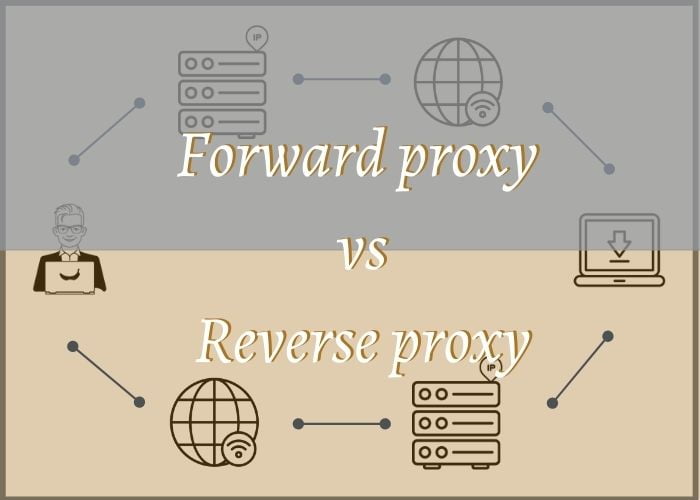Forward Proxy
A forward proxy, also known as a private proxy, is an intermediary server that sits between a client and the internet. When a client sends a request to access a web resource, it first goes through the forward proxy. The forward proxy then forwards the request to the internet on behalf of the client, rescues the requested data, and sends it back to the client.
Forward proxies are typically deployed on the client side and are commonly used for tasks such as anonymizing client IP addresses, filtering content, and controlling access to websites.
Key Characteristics of Forward Proxy
1.Client-Side Proxy
Forward proxies are configured on the client side, representing clients who must explicitly direct their traffic through the proxy server.
2.Client Anonymity
Private proxies can mask the identities and IP addresses of clients, providing a level of anonymity when accessing the internet.
3.Personalized Access
With private proxies, users have exclusive access to the proxy server, ensuring dedicated bandwidth and enhanced security.
4.Caching and Performance Optimization
Forward proxies cache commonly accessed content on the proxy server. When multiple clients request the same content, the proxy serves the cached copy instead of fetching it again from the internet. This reduces bandwidth usage and latency, enhancing performance.

Reverse Proxy
A reverse proxy is a type of shared proxy that sits between the internet and a web server. Unlike a forward proxy, which acts on behalf of clients, a reverse proxy acts on behalf of servers. When clients send requests to access a web service, they interact with the reverse proxy instead of directly communicating with the server.
The reverse proxy then forwards these requests to the appropriate server, retrieves the responses, and sends them back to the clients. Reverse proxies are commonly used for tasks such as load balancing, SSL termination, caching, and enhancing security by protecting servers from direct access to the internet.
Key Characteristics of Reverse Proxy
1.Server-Side Proxy
Reverse proxies are positioned on the server side, intercepting incoming requests before they reach the actual server.
2.Load Balancing
Shared proxies often incorporate load-balancing algorithms to distribute incoming traffic across multiple servers, thereby improving scalability and reliability.
3.Cost-Effective Solution
With shared proxies, multiple users share the same proxy server, making it a cost-effective option for businesses with budget limitations.
4.SSL Termination
Reverse proxies commonly manage SSL encryption and decryption for servers, a process called SSL termination. This reduces the number of cryptographic tasks on servers, boosting performance and simplifying SSL certificate management.
Conclusion
Forward proxies, such as private proxies from Proxiesforrent, primarily serve clients by forwarding their requests to the internet with personalized access and anonymity. Reverse proxies, like shared proxies, primarily serve servers by blocking incoming requests and directing them to the appropriate destinations with cost-effective load-balancing solutions
Frequently Asked Question
Yes, it’s possible to configure a proxy server to act as both a forward and reverse proxy, depending on the network configuration and requirements.
Both forward and reverse proxies can enhance security, but they focus on different aspects. Forward proxies are for client-side measures like content filtering, while reverse proxies handle server-side security like SSL termination.
Reverse proxies can help mitigate DDoS attacks by distributing traffic across multiple servers.
Private proxies provide dedicated bandwidth and exclusive access, ensuring enhanced security and reliability for your browsing or scraping needs. Shared proxies, on the other hand, offer a cost-effective solution for businesses with multiple users or limited budgets.
Reverse proxies have the power to mitigate Distributed Denial of Service (DDoS) attacks by distributing incoming traffic across multiple servers, minimizing the impact, and preserving server uptime.



